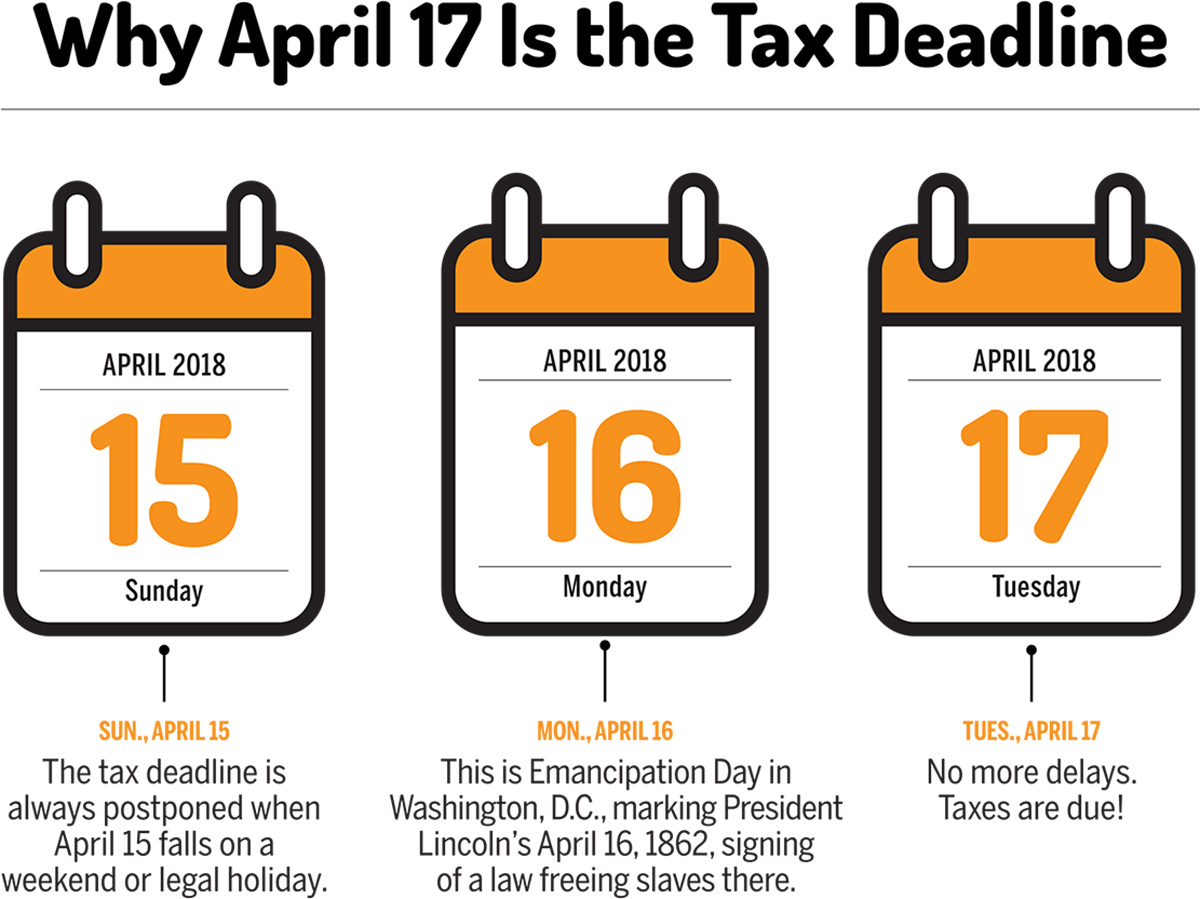

Finance
How To File A Nonresident State Tax Return
Modified: February 21, 2024
Learn how to file a nonresident state tax return and navigate the complexities of finance. Maximize deductions and ensure compliance while minimizing tax liability.
(Many of the links in this article redirect to a specific reviewed product. Your purchase of these products through affiliate links helps to generate commission for LiveWell, at no extra cost. Learn more)
Table of Contents
- Introduction
- Determine Your Nonresident State Tax Filing Requirements
- Gather the Necessary Documents and Information
- Fill Out the Nonresident State Tax Return Form
- Report Income Earned in the Nonresident State
- Claim Any Applicable Nonresident State Tax Credits
- Calculate Your Nonresident State Tax Liability
- Paying Your Nonresident State Taxes
- File Your Nonresident State Tax Return
- Common Mistakes to Avoid When Filing a Nonresident State Tax Return
- Conclusion
Introduction
Filing a nonresident state tax return can be a daunting task, but it’s essential if you earned income in a state where you don’t reside. Whether you work remotely, earn rental income, or have investment gains in a different state, understanding your tax obligations is crucial to avoid penalties and ensure compliance.
Each state has its own rules and requirements for nonresident tax returns, so it’s essential to familiarize yourself with the specific regulations of the state in which you earned income. While the process may seem complicated at first, with proper preparation and understanding, filing your nonresident state tax return can be done accurately and efficiently.
In this article, we will guide you through the process of filing a nonresident state tax return. We will discuss how to determine your filing requirements, gather the necessary documents, fill out the tax return form, report your income, claim any applicable tax credits, calculate your tax liability, make tax payments, and finally, file your tax return.
By following these steps, you can navigate the complexities of filing a nonresident state tax return and fulfill your tax obligations in a responsible and timely manner.
Now, let’s dive into the details and learn how to effectively file your nonresident state tax return.
Determine Your Nonresident State Tax Filing Requirements
When it comes to filing a nonresident state tax return, the first step is determining whether you have a filing obligation in the state where you earned income. The criteria for filing as a nonresident will vary from state to state, so it’s essential to research and understand the specific regulations of the state in question.
Generally, nonresidents are required to file a tax return if they earned income in a state through any of the following activities:
- Earning wages or salary from a job in the nonresident state
- Receiving rental income from properties located in the nonresident state
- Earning self-employment income from business activities in the nonresident state
- Realizing capital gains or losses from the sale of assets in the nonresident state
- Receiving dividends or interest income from investments in the nonresident state
- Any other type of income generated within the nonresident state
It’s worth noting that some states may have income thresholds or specific requirements for nonresidents to meet before a tax return becomes mandatory. For example, a state might only require nonresidents to file a tax return if their annual income exceeds a certain threshold, such as $1,000 or $10,000.
Additionally, some states have reciprocal agreements with neighboring states, which can impact your filing requirements. Reciprocal agreements allow individuals who work in one state but live in another to only pay taxes in their state of residence. Be sure to check if such an agreement exists between the state where you work and the state where you reside.
If you determine that you have a filing requirement as a nonresident, it’s crucial to obtain the correct tax forms from the respective state’s tax department. These forms may differ from the ones used for resident tax returns, so ensure that you are using the appropriate forms for nonresidents.
Being aware of your nonresident state tax filing obligations will help you avoid penalties and ensure compliance with the tax laws of the state where you earned income. Once you have determined your filing requirements, you can proceed with gathering the necessary documents and information for your nonresident state tax return.
Gather the Necessary Documents and Information
Before you can start filling out your nonresident state tax return, it’s important to gather all the necessary documents and information. This will ensure that you have accurate and complete information to report on your tax return, reducing the risk of errors or omissions.
The specific documents and information you’ll need may vary depending on your individual circumstances and the state where you earned income. However, here are some common documents and information you should gather:
- W-2 forms: If you received wages or salary from an employer in the nonresident state, you’ll need your W-2 form(s) to report your income.
- 1099 forms: If you received income as an independent contractor or freelancer, you’ll need any 1099-MISC or 1099-NEC forms that show your earnings.
- Rental income records: If you earned rental income from properties located in the nonresident state, gather records of the rental income received, as well as any associated expenses.
- Investment statements: If you earned dividends, interest income, or realized capital gains from investments in the nonresident state, gather your investment statements that reflect these transactions.
- Social Security Number or Individual Taxpayer Identification Number (ITIN): You’ll need your Social Security Number or ITIN to include on your nonresident state tax return.
- Proof of residency: If you have established residency in another state, gather any documents that prove your residency status, such as a driver’s license or lease agreement.
- Any relevant state-specific forms: Some states may have additional forms or schedules specific to nonresidents, so make sure to check the state’s tax department website for any state-specific requirements.
It’s crucial to keep detailed records and documentation of your income and expenses throughout the year, as this will make the tax filing process smoother and more accurate. These records will serve as evidence of your income and deductions, supporting the numbers you report on your nonresident state tax return.
Having all the necessary documents and information at hand will save you time and frustration during the tax preparation process. Once you have gathered everything you need, you can move on to filling out the nonresident state tax return form.
Fill Out the Nonresident State Tax Return Form
Once you have gathered all the necessary documents and information, it’s time to fill out the nonresident state tax return form. The specific form you’ll need to use will depend on the state where you earned income, so be sure to download the correct form from the state’s tax department website.
The nonresident state tax return form will typically require you to provide the following information:
- Personal information: This includes your name, address, Social Security Number or ITIN, and other basic identifying information.
- Filing status: Indicate whether you are filing as single, married filing jointly, married filing separately, or head of household.
- Income: Report all sources of income earned in the nonresident state, such as wages, rental income, self-employment income, investment income, and any other applicable income.
- Adjusted Gross Income (AGI): Calculate your AGI, which is your total income minus specific deductions or adjustments allowed by the state.
- Deductions or credits: If the nonresident state allows for any deductions or credits, make sure to include them on the tax return form. This may include deductions for healthcare expenses, education expenses, or child tax credits, among others.
- Tax liability: Calculate your tax liability based on the tax rates and regulations of the nonresident state.
It’s essential to pay close attention to the instructions provided on the nonresident state tax return form and fill it out accurately. Mistakes or omissions can lead to processing delays or even potential penalties, so double-check your entries before submitting the form.
If you have any questions or need assistance in completing the form, consider reaching out to a tax professional or utilizing online resources provided by the state’s tax department. Some states also offer helplines or assistance programs to guide nonresidents through the tax filing process.
Once you have filled out the nonresident state tax return form correctly and completely, the next step is to report your income earned in the nonresident state.
Report Income Earned in the Nonresident State
One of the crucial steps in filing a nonresident state tax return is accurately reporting the income you earned in the nonresident state. This includes all sources of income, such as wages, rental income, self-employment income, investment income, and any other income earned within the state’s jurisdiction.
To report your income, you will typically need to provide specific details on the nonresident state tax return form. Here are some key points to consider:
- Wages and salary: If you received income from a job in the nonresident state, report the total wages and salary earned. Use the information from your W-2 form(s) provided by your employer.
- Rental income: If you earned rental income from properties located in the nonresident state, report the total amount received. Ensure that you have maintained accurate records of rental income and any associated expenses.
- Self-employment income: If you conducted business activities in the nonresident state as a self-employed individual, report the total self-employment income earned. Use the information from your 1099-MISC or 1099-NEC forms.
- Investment income: Report any dividends, interest income, or capital gains from investments in the nonresident state. Refer to your investment statements for accurate figures.
- Other income: If you earned any other type of income within the nonresident state, such as royalties or lottery winnings, make sure to report it accordingly.
It’s important to report your income accurately and in accordance with the state’s instructions. Failure to report income correctly can lead to penalties or an audit by the state’s tax authorities.
In addition to reporting your income, you may also need to provide details on any deductions or credits that apply to your specific situation. Some states allow nonresidents to claim deductions for certain expenses, such as healthcare costs or student loan interest. Check the state’s tax instructions or consult with a tax professional to determine if you are eligible for any deductions or credits.
By accurately reporting your income earned in the nonresident state, you ensure compliance with the state’s tax laws and fulfill your tax obligations. Once you have reported your income, you can move on to claiming any applicable nonresident state tax credits.
Claim Any Applicable Nonresident State Tax Credits
When filing a nonresident state tax return, you may be eligible to claim certain tax credits that can help reduce your overall tax liability. These credits are designed to provide relief to taxpayers who meet specific criteria or engage in certain activities within the nonresident state.
The availability of nonresident state tax credits varies from state to state, so it’s important to review the specific regulations and instructions provided by the state’s tax department. Here are some common nonresident state tax credits you may be eligible for:
- Income tax paid to another state: If you paid income tax to another state on income earned there, you may be able to claim a credit for the taxes paid. This prevents double taxation on the same income.
- Nonresident tax credits: Some states offer specific tax credits for nonresidents, such as credits for taxes paid to a foreign country or credits for taxes paid on income from a specific industry or activity.
- Education credits: Nonresident students or parents of nonresident students may be eligible for education-related tax credits, such as the American Opportunity Credit or the Lifetime Learning Credit.
- Energy-efficient credits: Certain states provide tax credits for energy-efficient measures taken by nonresidents, such as installing solar panels or upgrading to energy-efficient appliances.
- Childcare or dependent care credits: If you incurred expenses for childcare or dependent care while earning income in the nonresident state, you may be able to claim credits to offset those costs.
It’s essential to carefully review the eligibility criteria and documentation requirements for each tax credit. Some credits may have income limits, specific qualifications, or require supporting documentation to substantiate your eligibility.
To claim the available tax credits, you will typically need to complete the necessary schedules or forms provided by the state’s tax department. Follow the instructions carefully and ensure that you provide accurate information and documentation to support your claims.
Remember that claiming tax credits can significantly reduce your tax liability, potentially resulting in a refund or lower amount owed. It’s worth taking the time to identify and claim any applicable nonresident state tax credits that you qualify for.
Once you have calculated your tax liability and accounted for any applicable tax credits, you’re ready to move on to the next step: calculating your nonresident state tax liability.
Calculate Your Nonresident State Tax Liability
Calculating your nonresident state tax liability is a crucial step in the process of filing your tax return. This calculation determines the amount of state income tax you owe to the nonresident state where you earned income. The method for calculating your tax liability will depend on the specific tax laws and regulations of the state in question.
To accurately calculate your nonresident state tax liability, follow these steps:
- Determine your taxable income: Start by determining your taxable income in the nonresident state. This includes all income earned within the state, including wages, rental income, self-employment income, and investment income.
- Apply the state’s tax rates: Review the tax rate schedule provided by the nonresident state’s tax department. This schedule will outline the progressive tax rates that apply to different income levels. Apply the appropriate tax rate to each portion of your taxable income.
- Consider any deductions or exemptions: Some states provide deductions or exemptions that can reduce your taxable income. Review the state’s instructions to determine if you qualify for any deductions or exemptions and apply them accordingly.
- Account for any nonresident tax credits: If you are eligible for any nonresident tax credits, subtract the credits from your calculated tax liability. This will reduce your overall tax liability.
- Calculate your final tax liability: Once you have accounted for tax rates, deductions, exemptions, and credits, you can calculate your final nonresident state tax liability. This is the amount of tax you owe to the state.
It’s important to note that each state has its own tax laws and may have additional complexities or nuances in their tax calculations. Consult the state’s tax department website or seek professional advice if you have any questions or doubts about calculating your nonresident state tax liability.
After calculating your tax liability, you will need to make arrangements to pay your nonresident state taxes. The payment process will be discussed in the next section.
Paying Your Nonresident State Taxes
Once you have calculated your nonresident state tax liability, it’s time to make arrangements to pay your taxes. The specific payment methods and deadlines will vary depending on the state where you earned income. Here are some general steps to follow:
- Review payment options: Visit the website of the nonresident state’s tax department to familiarize yourself with the available payment options. Some common methods include electronic payment through direct debit, credit card, or electronic funds transfer. Alternatively, you may be able to mail a check or money order.
- Pay by the deadline: It’s crucial to make your nonresident state tax payment by the specified deadline. Failure to do so may result in penalties or interest charges. Check the tax department’s website or your tax return instructions for the payment deadline associated with your filing.
- Include payment details: If you are mailing a payment, ensure that you include your payment details accurately. This may include your name, address, Social Security Number or ITIN, and the tax year for which you are making the payment. Attach any required payment vouchers or forms provided by the state.
- Keep proof of payment: After making your nonresident state tax payment, retain a copy of the payment confirmation or any supporting documentation. This will serve as proof that you have fulfilled your tax obligation in case of any future inquiries or discrepancies.
It’s important to note that some states may require you to make estimated tax payments throughout the year if you anticipate owing a significant amount in nonresident state taxes. Estimated tax payments are typically made on a quarterly basis and help ensure that you meet your tax obligations in a timely manner. Check the state’s tax department website or consult with a tax professional to determine if estimated tax payments are required in your situation.
Paying your nonresident state taxes promptly and accurately is crucial to avoid penalties and maintain compliance with the state’s tax laws. Once you have made your payment, you are ready to proceed with filing your nonresident state tax return.
File Your Nonresident State Tax Return
After completing all the necessary steps, including determining your filing requirements, gathering documents, filling out the tax return form, reporting income, claiming tax credits, and paying your nonresident state taxes, it’s time to file your nonresident state tax return.
Here are the key steps to follow when filing your nonresident state tax return:
- Verify accuracy: Before submitting your tax return, carefully review all the information you have provided. Make sure that your personal details, income figures, deductions, and credits are accurate and complete.
- Choose filing method: Determine whether you will file your tax return electronically or by mail. Many states offer the option to file electronically, which can expedite the processing of your return. However, if you prefer the traditional paper filing method, ensure that you properly complete and sign your tax return form.
- Include supporting documents: If the nonresident state requires any supporting documents to be attached to your tax return, ensure that you include them. This may include copies of W-2 forms, 1099 forms, or other documentation that supports your reported income and deductions.
- Keep copies: Make copies of all the documents you are submitting, including your tax return, accompanying schedules, and any supporting documents. Retain these copies for your records in case you need them in the future.
- Submit your tax return: If filing electronically, follow the instructions provided by the state’s tax department to submit your return online. If filing by mail, ensure that you accurately address the envelope and add sufficient postage. Consider sending your tax return via certified mail or with a return receipt requested for proof of delivery.
- Track your return: If you filed your tax return electronically, you may be able to track its status on the state’s tax department website. This allows you to ensure that your return was received and is being processed accordingly.
It’s important to file your nonresident state tax return by the specified deadline to avoid penalties or interest charges. Refer to the state’s tax department website or your tax return instructions for the filing deadline associated with your situation.
By completing these steps and filing your nonresident state tax return accurately and on time, you fulfill your tax obligations and ensure compliance with the nonresident state’s tax laws.
Remember to retain a copy of your filed tax return and all related documents for future reference. Filing your nonresident state tax return is a critical step in your financial responsibilities, and by doing so successfully, you can enjoy peace of mind and focus on other aspects of your personal and financial well-being.
Common Mistakes to Avoid When Filing a Nonresident State Tax Return
Filing a nonresident state tax return can be complex, and even small errors can have significant consequences. To ensure a smooth and accurate filing process, it’s important to be aware of common mistakes and take steps to avoid them. Here are some common mistakes to watch out for when filing a nonresident state tax return:
- Incorrectly determining filing status: Choosing the wrong filing status, such as filing as a nonresident when you actually meet the criteria for resident status, can result in incorrect tax calculations and potential penalties. Review the guidelines provided by the state’s tax department to accurately determine your filing status.
- Failing to report all income: Make sure to report all income earned in the nonresident state, including wages, rental income, self-employment income, and investment income. Failing to report income accurately can lead to underpayment and potential audit risk.
- Not applying applicable deductions and credits: Many states offer deductions and credits to nonresidents, such as credits for taxes paid to another state or deductions for specific expenses. Failure to claim these deductions and credits can result in overpayment of taxes.
- Mathematical errors: Simple arithmetic mistakes can occur when calculating income, deductions, or tax liabilities. Double-check all calculations and use tax preparation software or online tools to minimize the risk of mathematical errors.
- Forgetting to sign and date the tax return: When filing a paper return, it’s important to remember to sign and date the tax return. An unsigned return will likely be considered invalid, and this can cause significant delays in processing your return.
- Mailing to the wrong address: When filing a paper return, ensure that you correctly address the envelope and include the appropriate mailing address. Sending your return to the wrong address can result in lost documents and delayed processing.
- Failure to keep copies of documents: It’s essential to maintain copies of all documents related to your nonresident state tax return, including the tax return itself, supporting documents, payment receipts, and any correspondence with the state’s tax department. These copies will serve as valuable records for proof of filing and in case of future inquiries or audits.
- Missing the filing deadline: Failing to file your nonresident state tax return by the deadline can result in penalties and interest charges. Be aware of the filing deadline and make a note of it to ensure timely submission.
To avoid these mistakes, take your time, review all the information carefully, and double-check your tax return before submitting it. Utilize tax preparation software or consult with a tax professional if needed, as they can provide guidance and help minimize errors.
By being aware of these common mistakes and taking the necessary precautions, you can increase the accuracy of your nonresident state tax return and streamline the overall filing process.
Conclusion
Filing a nonresident state tax return may seem overwhelming at first, but with the right knowledge and approach, it can be a manageable process. By understanding your filing requirements, gathering the necessary documents, accurately filling out the tax return form, reporting your income, claiming applicable tax credits, paying your taxes, and filing your return on time, you can fulfill your tax obligations as a nonresident.
Throughout this article, we have discussed the key steps involved in filing a nonresident state tax return, highlighting important considerations and potential pitfalls to avoid. Taking the time to familiarize yourself with the specific regulations of the state where you earned income and seeking guidance when needed can help ensure that you comply with the state’s tax laws and avoid penalties or interest charges.
Remember to gather all the relevant documents, report your income accurately, claim any eligible deductions or credits, and calculate your nonresident state tax liability correctly. Paying your taxes by the specified deadline and filing your tax return in a timely manner are vital to maintaining compliance and peace of mind.
As you navigate the process of filing a nonresident state tax return, don’t hesitate to seek assistance from tax professionals or utilize online resources provided by the state’s tax department. Taking advantage of these resources can help you navigate any complexities or nuances associated with nonresident state tax filings and ensure that you fulfill your tax obligations accurately.
By following the steps outlined in this article and being proactive in your tax preparation, you can confidently and successfully file your nonresident state tax return. Remember that each state may have varying requirements and processes, so make sure to stay informed and up-to-date with the specific guidelines of the state where you earned income.
Filing your nonresident state tax return demonstrates your commitment to fulfilling your financial responsibilities and maintaining compliance with the tax laws of the nonresident state. With proper preparation and attention to detail, you can navigate the process smoothly and focus on your personal and financial well-being.














